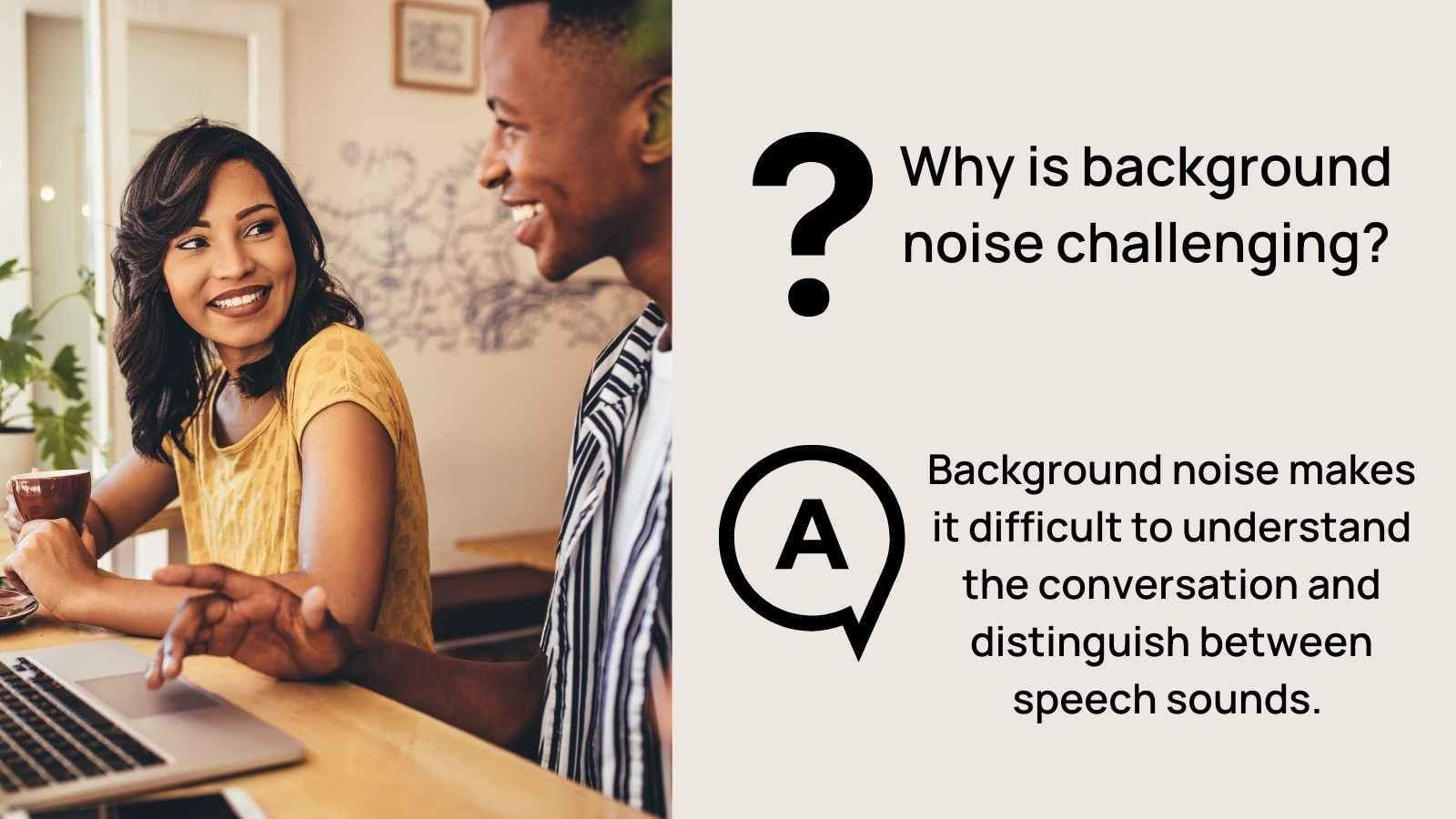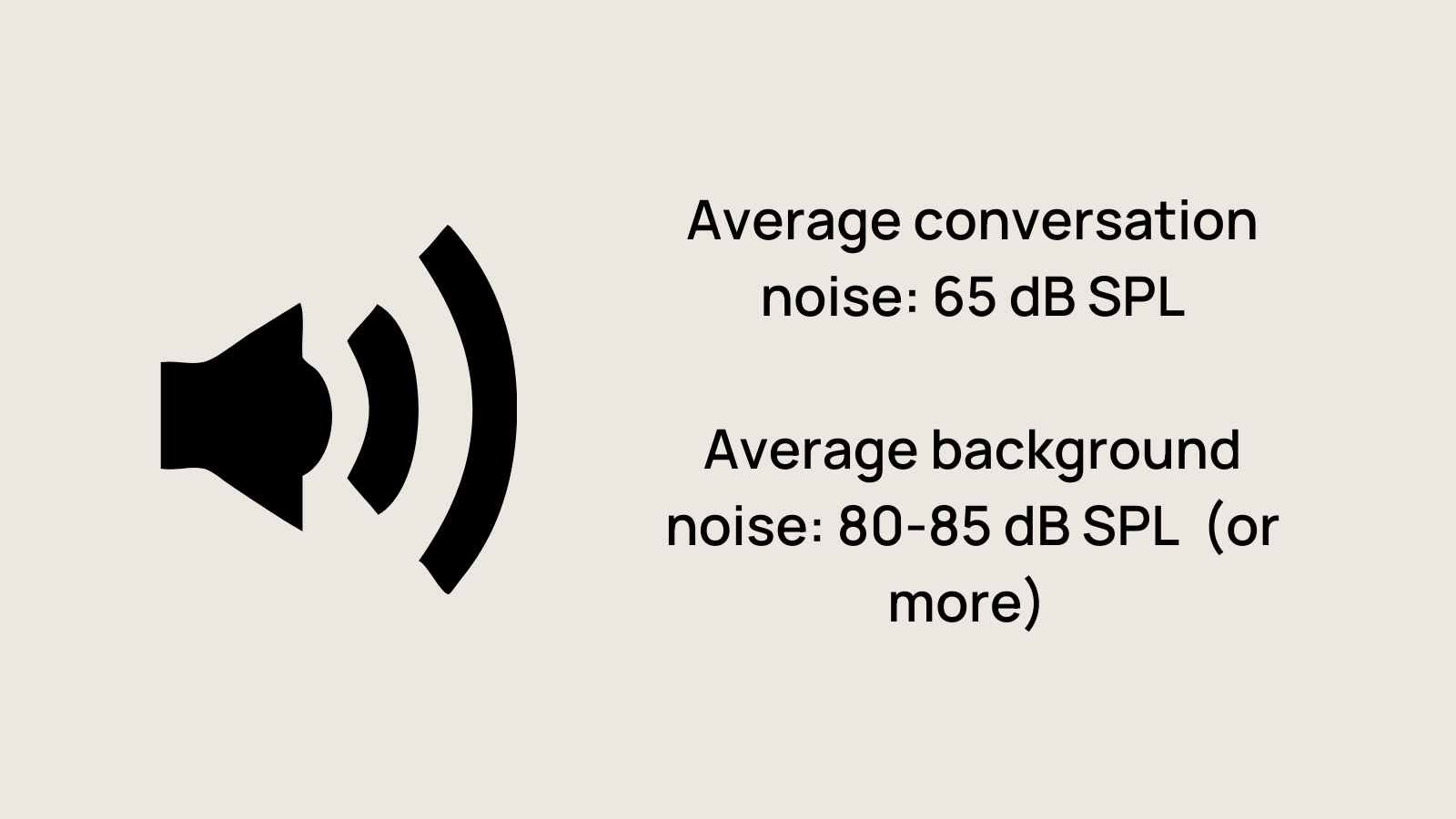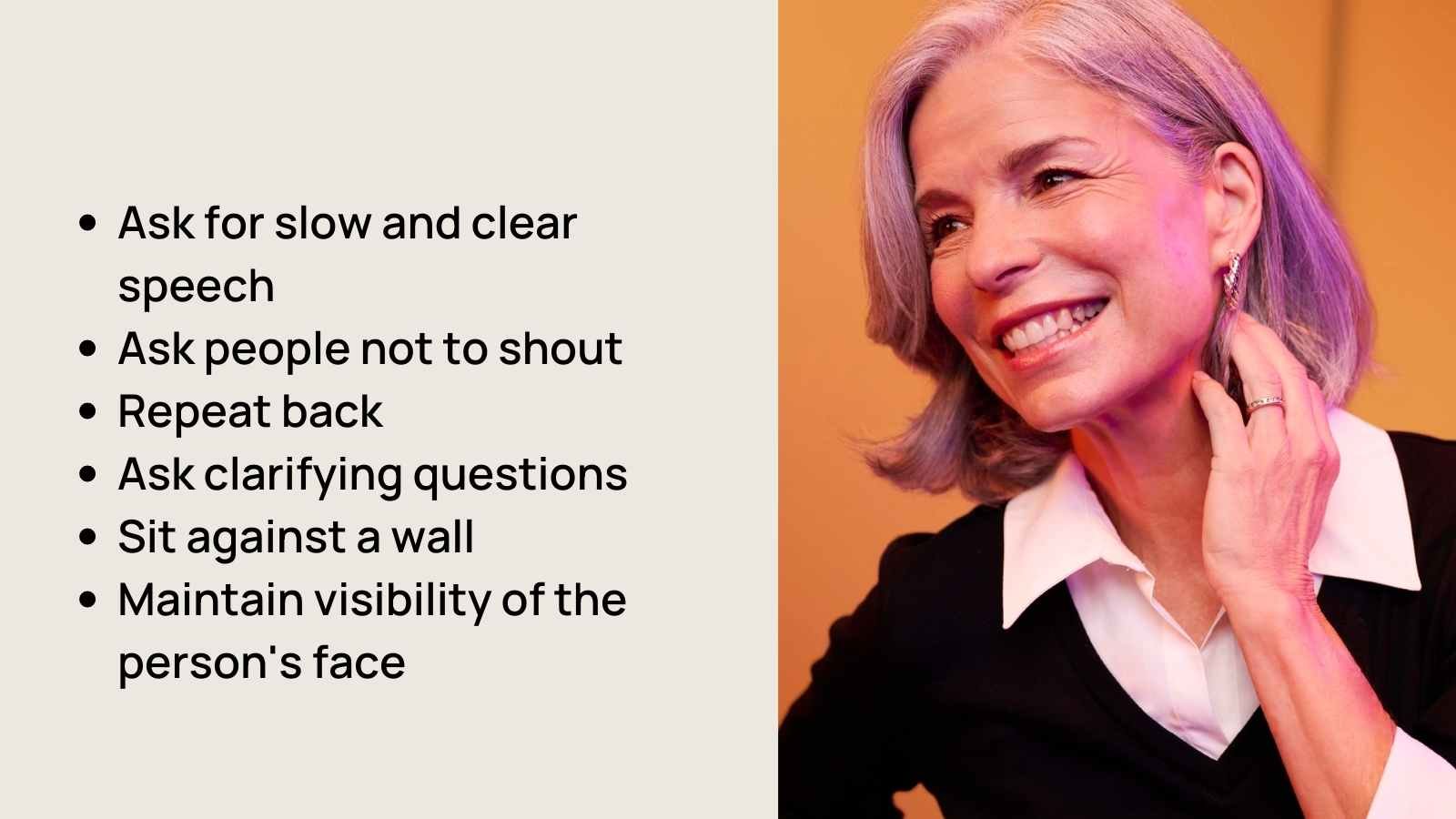Have you ever been in a situation where you were surrounded by loud and distracting background noise? Focusing on the conversation can be difficult if you struggle to understand through the background noise. As an audiologist, I have met patients who experience incredible frustration due to interactions in a noisy place, such as a restaurant or another environment. Some patients avoid certain social situations altogether due to the communication difficulty they experience there. In this article, we'll discuss more about what makes noisy places challenging listening environments, how your hearing aids work in noisy environments, and what you can do to better manage background noise.
Why is background noise challenging?

Background noise is challenging for everyone, even with normal hearing. However, it becomes much more challenging for people with hearing loss because it makes it difficult to understand the conversation and distinguish between speech sounds. This is especially true in crowded restaurants, bars, or concerts. In addition, the louder the background noise, the more challenging it becomes to hear speech. Why is that? Consonant sounds (e.g., f, sh, s, and others) are both soft and high-frequency sounds, requiring more listening effort to understand the conversation.
Signal-to-Noise Ratio

You've probably noticed this at noisy places—such as parties or crowded spaces—where the noise makes it difficult for people to focus and pick out specific conversations. Take a busy restaurant for example, background noise may average 80-85 dB SPL or more. For speech to be easily audible over the background noise, the signal would need to be greater than the background noise level. The average conversational speech comes in at around 65 dB SPL and shouted speech at about 80 dB SPL. It will be challenging to understand when the speech signal and background noise come in at the same volume or when the speech signal is softer than the background noise. In some instances, this misinterpretation could lead to trouble; for example, if the person needed clarification and responded based on what they thought they heard. Next, let's look at how hearing aids help in background noise.
How Hearing Aids Manage Background Noise

Today's hearing aids are equipped with advanced features that help reduce the impact of background noise on conversations (this is very helpful!). There are several strategies that hearing aid technology utilizes to minimize background noise.
- Noise reduction algorithms help separate speech from other environmental noises.
- Directional microphone programs
- Assistive devices (e.g., remote microphones) that improve signal-to-noise ratios
Now, let's take a deeper look at each of these strategies.
Noise Reduction Algorithms
While every hearing aid manufacturer has a different type of processing and background noise filtering, they all have the same goal. And that goal is to help you hear better.
The hearing aid microphones pick up sound in your environment and sort out which sounds are speech and which noise. The hearing aids then amplify speech while reducing background noise. Hearing aids may also accomplish this by changing the direction of the microphones to pick up the speech signal better while reducing the background noise.
Directional Microphone Programs
There’s another option that helps in background noise: A directional microphone program. With this program, you can manually access with a button press or adjustment with a smartphone app. This program focuses the microphones directly in front to pick up the person directly in front of you while reducing the surrounding background noise. While your hearing aids will automatically make choices to improve your hearing in noise, this option will give you more focused support in background noise.
Assistive Devices
A remote microphone is another handy option to decrease background noise. When paired with your hearing aid, a remote microphone will send a much clearer speech signal directly to your ears while cutting out the surrounding background noise.
Will my hearing aid cut out background noise?

It’s true that hearing aids have become more sophisticated in how they handle background noise in recent years. However, no hearing aid can completely erase background noise. This is because some of the sound energy in background noise is also present in the speech signal. Therefore, it isn't possible to reduce one signal (aka, the noise) without it affecting the other (the speech). However, let's look at other tips to help you hear your best.
Tips For Hearing Aid Wearers

Having a conversation with present background noise can be challenging. Don’t get frustrated, because there are some other tips you can use.
Here’s how to manage background noise with a hearing aid:
• Ask people around you to speak slowly and clearly
• Ask people around you not to shout
• Repeat back what you understand in the conversation
• Ask clarifying questions
• Sit with your back against a wall whenever possible
• Position yourself so that you have good visibility of the person's face
Program Adjustment
Your audiologist can adjust or create a program specifically for the most challenging setting. For example, if you're having trouble hearing in the car with road noise, there are specific hearing aid programs for this setting. Tell your audiologist about the specifics of the environment you're struggling with.
SoundPrint
Are you looking for a quiet place to meet with friends or family? The SoundPrint app helps look up quieter venues and is more conducive to easier communication. This app allows you to measure the sound level in a location and submit it. Other app users can then look up sound levels of places in the area to comfortably choose easier listening environments.
Brain Learning
Research suggests that listening exercises can help improve speech in noise understanding by training auditory listening and working memory. For example, clEAR is an program was designed by scientists at Washington University in St. Louis and targets auditory skills. This program guides individuals with hearing loss through a series of exercises with brain learning.
Conclusion
Managing background noise can be challenging, but with the right tips and tricks, it doesn't have to be overwhelming. By understanding how your hearing aids work in noisy environments and using assistive technology, or other listening strategies, you can improve your ability to hear clearly, even in complex environments. With these tips, meeting with friends, family, or coworkers doesn't have to be as complicated or frustrating.






